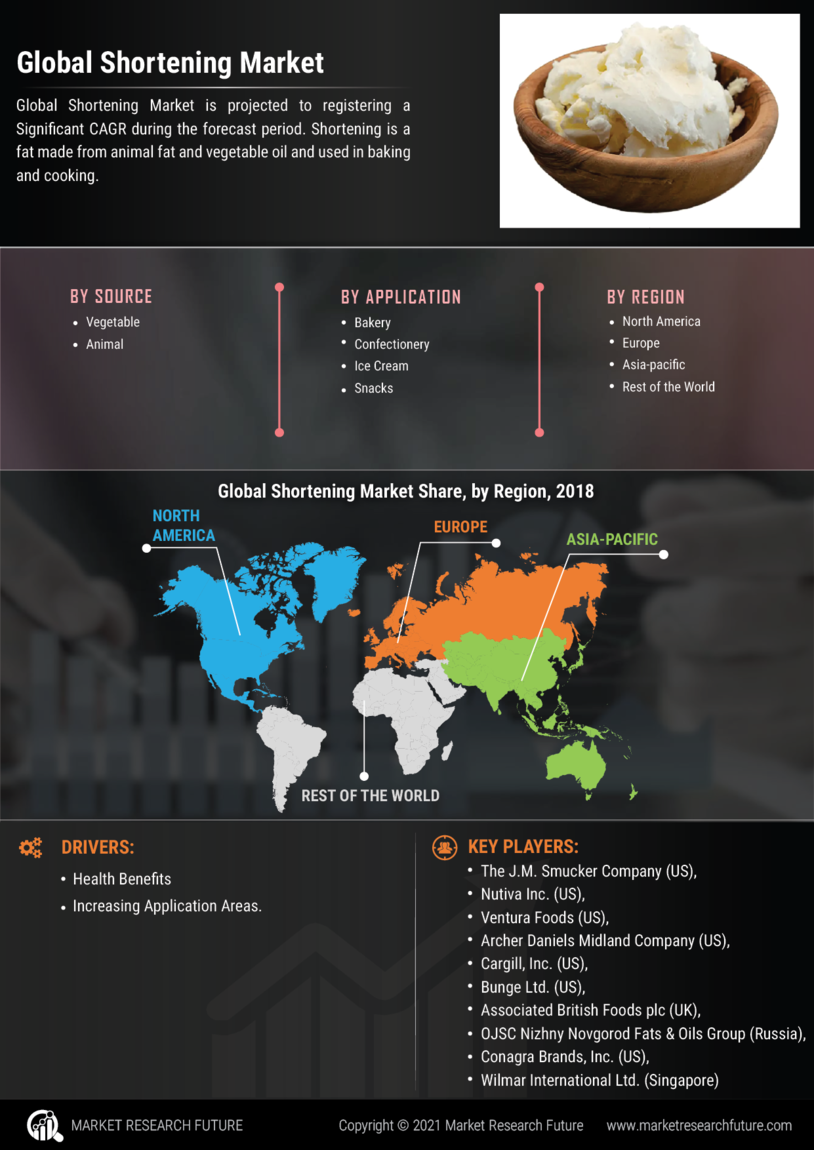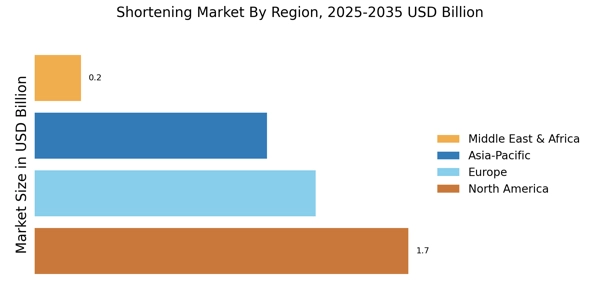Health and Wellness Trends
The Shortening Market is also being shaped by the growing health and wellness trends among consumers. As individuals become more health-conscious, there is a noticeable shift towards healthier shortening alternatives, such as those made from plant-based oils. This shift is prompting manufacturers to reformulate their products to reduce trans fats and incorporate healthier ingredients. Recent statistics show that the demand for non-hydrogenated shortenings has increased by approximately 15% in the past year. This trend indicates that the Shortening Market must continue to innovate and adapt to align with consumer preferences for healthier options, potentially leading to new product developments and market opportunities.
Expansion of Food Service Sector
The expansion of the food service sector is a critical driver for the Shortening Market. As restaurants and catering services grow in number and scale, the demand for high-quality shortening is likely to increase. Food service establishments often require shortening for frying, baking, and other culinary applications, making it an essential ingredient in their operations. Market analysis suggests that the food service industry is expected to grow at a rate of 5% annually, which could significantly impact the shortening market. This growth presents opportunities for manufacturers to supply innovative shortening solutions tailored to the specific needs of food service operators, thereby enhancing their product offerings.
Innovation in Baking Applications
Innovation within the baking sector is significantly influencing the Shortening Market. As bakers and food manufacturers experiment with new formulations, the demand for specialized shortenings is on the rise. These innovations often focus on improving the texture, shelf life, and flavor of baked goods. For instance, the introduction of high-performance shortenings that withstand high temperatures is becoming increasingly popular. Market data indicates that the baking segment accounts for a substantial share of the shortening market, with an estimated value of over 2 billion dollars. This trend suggests that as baking continues to evolve, the Shortening Market will likely adapt to meet the needs of both commercial and home bakers.
Rising Demand for Convenience Foods
The Shortening Market is experiencing a notable increase in demand for convenience foods, driven by changing consumer lifestyles. As more individuals seek quick meal solutions, manufacturers are responding by incorporating shortening into ready-to-eat and processed food products. This trend is reflected in the growing sales of frozen meals and snacks, which often utilize shortening for texture and flavor enhancement. According to recent data, the convenience food sector is projected to grow at a compound annual growth rate of approximately 4.5% over the next five years. This growth is likely to bolster the Shortening Market, as food producers increasingly rely on shortening to meet consumer expectations for taste and convenience.
Sustainability and Ethical Sourcing
Sustainability and ethical sourcing are becoming increasingly important in the Shortening Market. Consumers are more aware of the environmental and social impacts of their food choices, leading to a demand for sustainably sourced ingredients. This trend is prompting manufacturers to seek out palm oil and other shortening sources that are certified as sustainable. Recent data indicates that products labeled as sustainably sourced have seen a sales increase of around 20% in the past year. This shift suggests that the Shortening Market must prioritize sustainability in its supply chain and product development to meet consumer expectations and remain competitive in an evolving marketplace.


















Leave a Comment